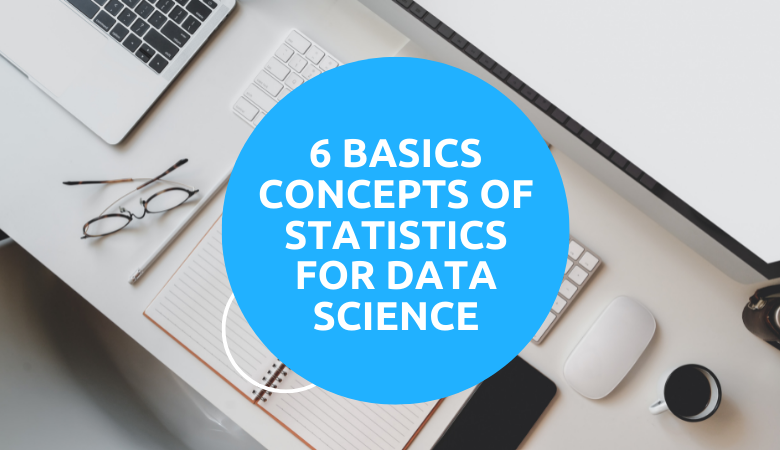6 Basics Concepts of Statistics for Data Science

Data Science is one of the most in-demand fields today. If you want to get into data science, you will have to have a good background in statistics. Statistics is a type of mathematical analysis that use quantified models and representations to analyse a set of experimental data or real-world research. On the other hand, data science aims to collect as much information as possible in statistics and data. Therefore, data science is all about understanding the statistics behind the interpretation of the data. Indeed, Statistics Assignment Help is a topic that most data scientists know how to do but are probably not good at. This blog will introduce 6 statistics basics concepts for data science.
What is statistics?
In simple terms, statistics is simply the study and manipulation of data.
As stated in the introduction, statistics is concerned with analysing and calculating numerical data.
According to statistician Sir Arthur Lyon Bowley, statistics are “numerical descriptions of facts in any domain of investigation set about each other.”
However, Statistics is divided into two categories:
Descriptive statistics: This provides strategies for summarising data by converting raw observations into useful information that is simple to analyse and communicate.
Inferential Statistics: This provides tools for studying experiments on tiny data samples and drawing conclusions about the total population.
What are the concepts of statistics for data science?
Statistics is at the basis of complex machine learning algorithms in data science, identifying and converting data patterns into actionable evidence. In addition, data scientists use it to collect, assess, analyze, and draw conclusions from data, as well as to apply quantifiable mathematical models to relevant variables.
1. Understand the Type of Analytics
Four types of analytics in statistics, which are as follows:
Descriptive analytics: Firstly, it informs us what happened in the past and assists businesses in understanding it.
Diagnostic Analytics: Secondly, it goes beyond descriptive data to help you understand why something happened in the past.
Predictive Analytics: It forecasts what will happen in the future and offers businesses actionable insights based on the data.
Prescriptive Analytics: Lastly, it suggests activities that capitalise on the forecasts.
2. Probability
The second concept of statistics for data science is probability.
In a Random Experiment, the probability is a measure of the possibility that an event will occur.
Indeed, probability enables data scientists to measure the confidence of research or experiment outcomes. The purpose of an experiment is to conduct controlled research under strict conditions. However, when the outcome cannot be predicted, we call it a chance experiment.
3. Central Tendency
Mean: The dataset’s average.
Median: The median of an ordered dataset is its median value.
Mode: The most often occurring value in the collection. A multimodal distribution exists when the data has multiple values that frequently happen.
Skewness: Skewness is a symmetry metric.
Kurtosis: A measure of how heavy or light the data is compared to a normal distribution.
4. Variability
The variability is the next concept of statistics for data science.
Range: Firstly, the difference between the top and lowest values in the dataset.
Interquartile Range, Percentiles, and Quartiles (IQR)
Percentiles: A metric that represents the value at which a particular proportion of observations in a group fall.
Quantiles: Quantiles are values that split the number of data points into four roughly equal quarters.
Interquartile Range (IQR): A statistical dispersion and variability metric based on dividing a data set into quartiles.
Variance: Secondly, the average squared difference in values from the mean used to determine how to spread out a set of data is in comparison to the mean.
Standard Deviation: The standard deviation is the difference between each data point and the mean, as well as the square root of the variance.
Standard Error (SE): Lastly, an estimate of the sample distribution’s standard deviation.
5. Relationship Between Variables
Causality: Firstly, the relationship between two occurrences in which one is influenced by the other.
Covariance: Secondly, a quantitative measure of the interdependence of two or more variables.
Correlation: Thirdly, a normalised form of covariance measures the link between two variables and spans from -1 to 1.
6. Regression
This is the major concept of statistics for data science.
Linear regression: Indeed, it is a method for modelling the connection between one dependent variable and one independent variable. In a scientific experiment, an independent variable is a variable that manipulates to examine the effects on the dependent variable. However, in a scientific experiment, the variable measures are known as the dependent variable
Multiple Linear regression: It is a method for simulating the relationship between two or more independent variables and one dependent variable.
Conclusion
We hope you enjoy this blog about basic statistics for data science.
In the world of data science, there are a lot of complex statistics that are important to know. However, there are also a lot of really basic statistics that are important to know. In this blog, we will be going over some of the most basic statistics that are important to know when performing data science.
In fact, Statistics is challenging to master, but it is essential for nearly all data science projects. By reading this blog post, you will learn some basic statistics concepts and how to use them in your data science projects.






